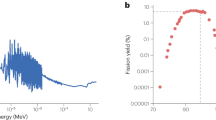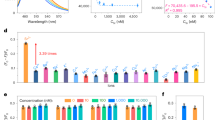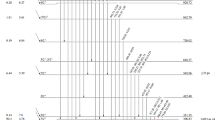Abstract
TECHNETIUM-99m is becoming an important tracer for many diagnostic investigations; for example, brain scanning and thyroid scanning1,2. Its chief advantages are that it has a short half-life and emits an essentially mono-energetic γ-ray which is only slightly internally converted. Hence quite large activities of technetium-99m can be safely administered to patients. So far this nuclide has only been assayed by comparing it with a standard of some other nuclide—for example, cobalt-57 (ref. 3)—and no absolute measurements have been reported. However, as will be shown here, it is possible to make an absolute measurement by the 4πβ-γ coincidence technique4. (The National Physical Laboratory plans to distribute standards of technetium-99m, calibrated by this technique, in October 1966, to users within 12 h travelling time of Teddington.)
This is a preview of subscription content, access via your institution
Access options
Subscribe to this journal
Receive 51 print issues and online access
$199.00 per year
only $3.90 per issue
Buy this article
- Purchase on SpringerLink
- Instant access to full article PDF
Prices may be subject to local taxes which are calculated during checkout
Similar content being viewed by others
References
McAfee, J. G., Fueger, C. F., Stern, H. S., Wagner, H. N., and Migita, T., J. Nucl. Med., 5, 811 (1964).
Tothill, P., and Irvine, W. J., Radioaktiv Isotopen in Klinik und Forschung, 6 (in the press).
Smith, E. M., J. Nucl. Med., 5, 871 (1964).
Campion, P. J., Intern. J. App. Rad. Isotop., 4, 232 (1959).
Author information
Authors and Affiliations
Rights and permissions
About this article
Cite this article
GOODIER, I., WILLIAMS, A. Measurement of the Absolute Disintegration Rate of Technetium-99m. Nature 210, 614–615 (1966). https://doi.org/10.1038/210614b0
Issue date:
DOI: https://doi.org/10.1038/210614b0
This article is cited by
-
Notes on measurement of Tc99m activity
Soviet Atomic Energy (1971)



